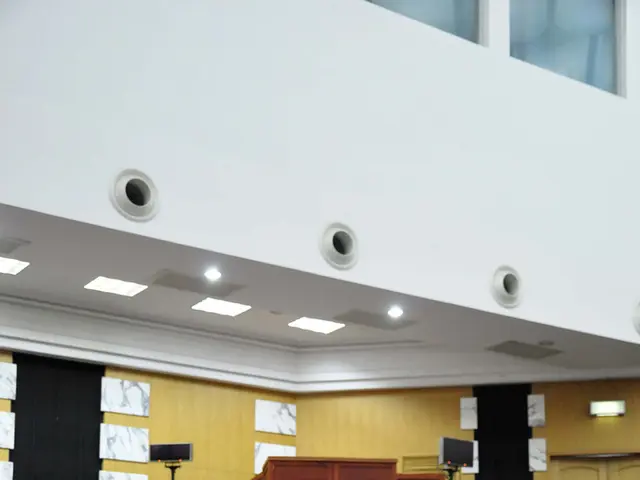Comprehensive Guide for Novices: Mastering Bonsai Tree Fertilization Basics
Bonsai trees, miniature versions of full-sized trees, require careful attention to maintain their health, vigor, and aesthetic quality. One essential aspect of bonsai care is fertilization, which replenishes the nutrients depleted from the soil during growth.
Different types of fertilizers are available for bonsai trees, each with its own advantages. General-purpose liquid fertilizers, commonly found at garden centres, are a popular choice. To avoid over-fertilizing due to the small soil volume of bonsai pots, these should be diluted to about half the recommended strength. Water-soluble fertilizers are effective for foliar feeding, which involves spraying the leaves every other month. Slow-release fertilizers like Naruko Fertiliser are suitable for less frequent feeding, approximately once every one to two months for species such as the Japanese Pepper Tree bonsai. Specific fertilizers, such as cactus potting soil nutrients for desert rose bonsai (Adenium), help maintain health and bloom production.
The application methods for fertilizing bonsai trees are varied. Fertilizer can be applied in liquid form either by watering or foliar spraying. For bonsai with fast growth, such as the Japanese Pepper Tree, weekly fertilization during the growing season can be effective, whereas slow-release fertilizer can supplement less frequent feedings. Some practitioners use a method of submerging the bonsai pot in water until bubbles stop to hydrate deeply before fertilizing.
The frequency of fertilization depends on the bonsai species and its growing season. Most bonsai should be fertilized every two to four weeks during their active growing season to provide a steady nutrient supply. Fertilizing is generally stopped or reduced significantly in winter when the bonsai goes dormant. For slow-growing desert rose bonsai, repotting with fresh nutrient-rich soil every two to three years is recommended rather than frequent fertilization. Species vary, so adjusting feeding frequency according to growth patterns is important; for example, Japanese Pepper Tree benefits from feeding from March to October and less or no feeding in winter.
In summary, following best practices for fertilizing bonsai trees involves selecting the right fertilizer type, applying it properly, and adjusting frequency based on the tree species and its growing season. Regular feeding of bonsai trees is important during the growing season, with the frequency changing for different tree types. Both organic and synthetic fertilizers will provide the necessary nutrients for bonsai growth, but it's recommended to use a gentle liquid solution and to buy urea-free fertilizer online.
Always remember to use fertilizers at half strength initially to observe tree response and avoid over-fertilizing. Ensure adequate watering before fertilizing to prevent root burn. Trim any damaged foliage and wait at least a month to resume feeding. Over-fertilization can harm a bonsai tree's roots and present visible symptoms like yellowing or dying foliage, a crusty layer of fertilizer on topsoil, slow growth, or leaves that drop early.
By following these guidelines, you can ensure that your bonsai trees thrive and continue to be a source of joy and beauty in your home or garden.
Maintaining the health of bonsai trees not only requires careful attention to their fertilization needs but also understanding the specific requirements of each species. For instance, general-purpose liquid fertilizers can be found at home-and-garden stores and are often used, but should be diluted to half the recommended strength to prevent over-fertilizing due to the small soil volume of bonsai pots. Additionally, incorporating gardening techniques like foliar feeding with water-soluble fertilizers and using slow-release fertilizers like Naruko Fertiliser can contribute to the overall plant health of bonsai trees, enhancing their lifestyle in your home or garden.




